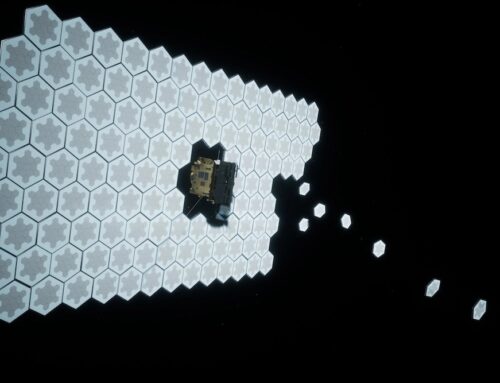BMA to open three environment-themed exhibitions in February
February 7, 2025
The Baltimore Museum of Art will welcome three new environment-themed exhibitions this month.
“Air Quality: The Influence of Smog on European Modernism” will explore connections between burning fossil fuels and the development of European modernist styles in the 19th and 20th centuries.
Paintings and works on paper by Henri Matisse, Claude Monet, James McNeill Whistler, and other artists will be paired with data from climate scientists.
The exhibition will be on view at the BMA from Feb. 9, 2025 through Aug. 3, 2025, and again from Aug. 13, 2025 through Feb. 22, 2026.

“Air Quality offers an intriguing look at the significant influence of environment on the work of several renowned artists at the turn of the 20th century,” said Dr. Asma Naeem, the BMA’s Dorothy Wagner Wallis Director, in a statement. “Smog and the effects of industrialization—whether it inspired or repelled the featured artists—was a significant characteristic of a range of European Modernist works. Today, as we consider the role of artists and creatives within climate dialogues, it is fascinating to reflect on the longstanding impact of the environment on creative production.”
The exhibition will show the contrast between works like Mattisse’s 1896 painting “The Dam at Pont Neuf,” which portrays smog over Paris, and the clearer skies portrayed in Matisse’s 1918 painting “The Maintenon Viaduct” and some of later works of the artist’s career.
Also opening Feb. 9 will be “Watershed: Transforming the Landscape in Early Modern Dutch Art.”
The exhibition, which will be on view through July 27, 2025, will examine the role of water in the economic, technological, and artistic development of the new Dutch Republic (what is now Netherlands), including the period leading up to and following its liberation from Spain in the 17th century.

“While national dialogues about environmentalism are often framed through contemporary experience, Watershed captures the realities of human engagement with the environment that began centuries ago,” Naeem said. “The beautiful and often romantic views created by Dutch artists reflect economic prosperity and provide insights into the ecological and human ramifications of that success, historically and into the present.”
The exhibition comprises five themes: “Labor and Trade,” “Water and Technology,” “Global Currents,” “Leisure and Nostalgia,” and “History and Landscape.”
About 40 works by artists such as Frans Hals, Balthasar van der Ast, Rembrandt van Rijn, and Jacob van Ruisdael, and many others are among the pieces in this exhibition.
Later this month, the museum will open its newly re-installed contemporary wing on Feb. 26.
A new presentation titled “Crosscurrents” will feature 67 works

Among the works in “Crosscurrents” is a new commission by interdisciplinary artist Abigail Lucien, 2023 winner of the Janet & Walter Sondheim Art Prize. The commissioned piece is made up of 10 steel sculptures inspired by nature, architecture, and the concept of “third space.”
“Our contemporary collection showcases some of the most daring imaginings of how artists connect with the environment and offers a rich and dynamic resource for exploring the beauty and complexity of our world. We are committed to bringing new works on view to engage our visitors in a depth of ideas and expressions and to ensuring that our collection galleries are a vibrant part of the museum experience,” Naeem said. “I am excited to debut the new commission works by Abigail Lucien and the extraordinary installations by Justen Leroy and Nari Ward.”
The exhibitions are part of the BMA’s “Turn Again to the Earth” initiatives committing to environmental sustainability, promoting discussion of climate change, and evaluating the museum’s role in the environment.
Search
RECENT PRESS RELEASES
Related Post




